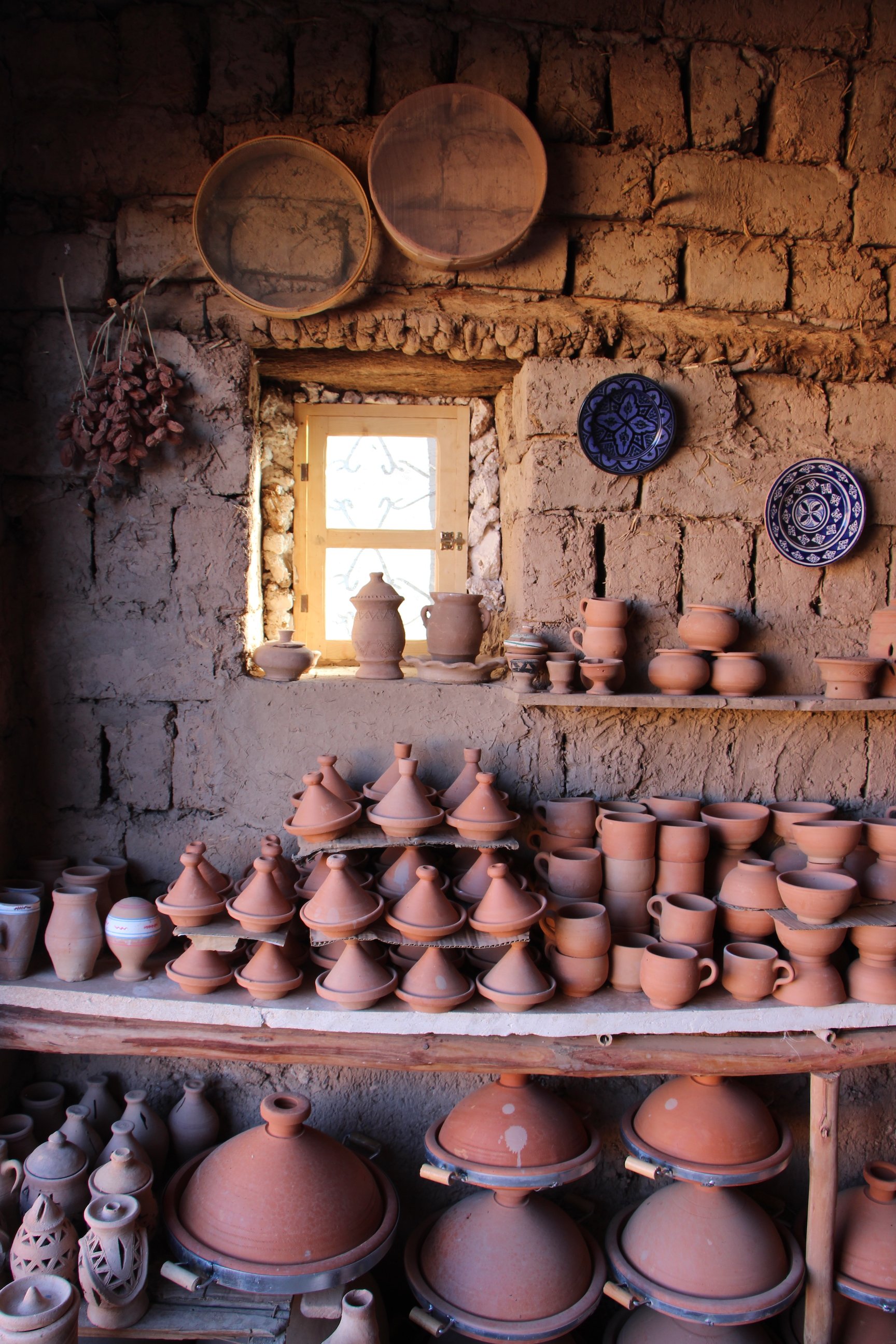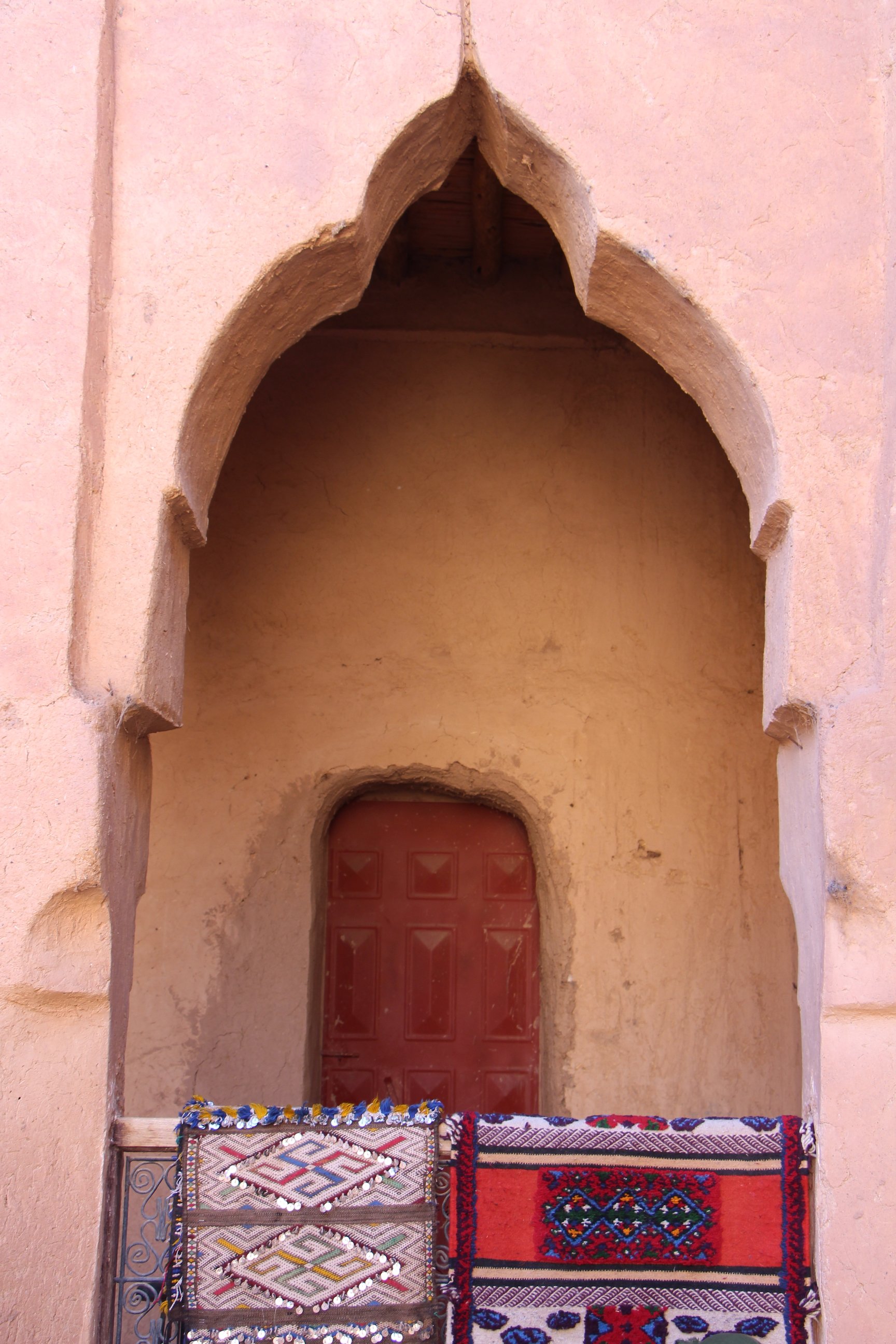Craft based design from Morocco
Craft is as old as human time, a practice which is deeply entwined in our daily lives and speaks for our unique place in the sentient world. There is a fundamental need in humankind to not only form functional objects using materials sourced from the local environment but to consciously create objects of decorative beauty. Archeologists have attributed finds of textile weaving to the Paleolithic Era as far back as 27,000 years ago, and pottery shards, stone tools, coins, jewellery and basketry unearthed at digs across the world reveal a great deal of information about these ancient civilisations.To this day craft is an integral feature of society, particularly in traditional communities that live in a closer symbiotic relationship with the natural world around them.
My own journey in craft has seen me immersed in these practices since childhood, growing up in a family where our clothes were handmade, much of our food homegrown, and all forms of art and crafting were daily activities. Following my studies in philosophy and social anthropology at university it felt completely natural to me to return to working with my hands and I started a picture framing business which saw me making bespoke frames for artists, photographers, galleries and craftspeople of all description. A few years on and I had opened my own gallery and a number of boutique lifestyle stores in my home city of Edinburgh.The traditional way to discover new talent and suppliers at that time was to attend trade fairs, it was the heyday of independent retail, well before online shopping had been conceived of and years before the rise of social media.
I travelled far and wide seeking new designers and products to excite me, and I delighted in sharing these finds with our customers. Our reputation grew by word of mouth and we built a loyal and diverse following in Edinburgh and well beyond.After many years of visiting trade fairs I was becoming jaded by what was being presented and was unable to find the kind of products I was interested in offering to our customers. It was then I made the decision to travel to Morocco and to embark on a new adventure. It was a fleeting trip to Morocco in the 1980s as a young student that first gave me a flavour of what the country had to offer, the dizzying sounds, scents and colours of the souks and the haunting call to prayer of the muezzin. Inevitably there was a visit to a rug shop and offers of sweet mint tea as a kaleidoscopic textile dreamscape magically appeared before me. I was hooked..
It was several years before I was able to return to Morocco, and my first ever experience of Marrakech. This time I was on a mission to connect with artisans and to develop a new line of products for my Edinburgh stores. Days spent getting lost and learning to navigate the winding lanes of the old medina followed and I gradually became accustomed to the calls of the traders as they entreated me to look at their wares. At the end of one long day in the dwindling light, far away from the tourist shops in the main hub of the souks, I met Hamid. His shop was small and he didn't speak any English but there was something about the quality of his babouche which intrigued me. We communicated in broken French as I followed him along the twisting, rutted paths busy with locals making their way home for the evening when finally we arrived at an ancient fondouk and climbed the narrow staircase to the top of the building.
Hamid opened the door to his workshop and my eyes were met by a sparkling sea of the softest leather slippers, some embroidered with sequins, and in every colour imaginable. My collaboration with the artisans of Morocco started this day.Initially I was importing from Morocco purely to stock my own shops, but in 2006 with the launch of my Bohemia business I started to sell through our new online store as well as our popular bricks and mortar shop. As a result of the visibility brought about by our online presence we began to be approached by other independent stores across the UK and internationally. It was a surprise, but a welcome one, as by 2008 the world had crashed into recession pulling the rug right from under the feet of retail. We closed all but one of our Edinburgh stores and gratefully accepted the wholesale requests that were organically finding their way to us.
My journey into the world of the artisan began in earnest, one of continual observing, listening and learning. Although the majority of our product still comes from Morocco we also partner with artisans in India, Turkey and Kenya to bring a diversity of design, materials and traditions to our customers. It is possible to place a handcrafted object in location and time by recognising the material it is made from and the technique used to construct it. A woven basket is not just a woven basket, the fibre used will tell you where in the world it is most likely to have come from and even the particular region of that country. For example, in Morocco reed and halfa grass baskets originate from the coastal region of Essaouira, while differing varieties of palm leaf baskets come from Marrakech and the north of the country. The fantastically colourful coiled pots which are bound in wool to create bold geometric patterns come from the desert regions in the south of Morocco.
The beauty of an object made by hand is that each piece is absolutely unique and bears the character of the individual maker; no more so than the rugs for which Morocco is justly famed. For the indigenous Amazigh (Berber) woman, who in the past was often illiterate due to a lack of schooling, rugs are a means of story telling using symbols to communicate meaning to her family and wider community. The style of rug woven in Morocco varies greatly from region to region, from flat weave kilims to hand knotted pile rugs, each and everyone unique to the weaver according to what her imagination dictates. The dense pile of the Beni Ourain tribal rugs, with their creamy background and distinctive black or dark brown lozenge shaped lines, are designed to keep the family warm during the bitterly cold winters in the Atlas Mountains. It is quite a leap for these rugs to find their way from the small earth and stone built homes of the weavers to appearing in glossy design magazines and gracing the floors of some of the most luxurious homes around the world. Boucherouite rugs, in contrast to the minimal design of the Beni Ourain, are wildly expressive and colourful rugs, both flat weave and knotted in style, and made to recycle old clothing and textiles. Nothing goes to waste in Morocco when it can be repurposed! For those who are lucky enough to travel to Marrakech it is worth a visit to the Musee Boucherouite, housed in a traditional riad in the medina, to learn more about the history and making of these fabulous rugs.
Historically rugs were woven for the family or tribe using wool from their own flocks and not for commercial exchange. However, over recent decades the international popularity of these textile works of art has created a demand for them to be produced as a commercial enterprise. Sadly, due to extreme poverty in many rural areas, families have felt compelled to sell their heritage pieces and middlemen are known to exploit their challenging circumstances by paying a fraction of the price to the weavers that they will achieve selling to tourists in the major cities. Genuine vintage rugs are now a rarity and most rugs on the market are new, although often described as vintage to sell at inflated prices. Encouragingly, women, weavers are starting to join together in cooperatives supported by The Anou, an artisan-led organisation whose platform connects makers directly with the end consumer, and results in the weavers receiving a fair price for their lifelong skill and dedication to this craft.
Where there is a profit to be made there also exists the opportunity for misappropriation. Crafting is by its very nature a slow process, the materials have to be gathered from the local environment when the time is right to harvest them, and the making is often carried out amongst all the multiplicity of daily tasks such as shepherding the animals, cooking for the family and caring for the children. On many occasions I have been surprised at the lack of knowledge or shocked by the disregard for these cultural practices by big manufacturers or retailers. I have been approached by a company in South Asia marketing their 'Moroccan' rugs made from New Zealand wool, and I have also seen piles of authentic Moroccan rugs in overseas workshops waiting to be copied and mass-produced. Big chain stores churn out look-alike artisanal wares 'inspired' by the traditional crafts of indigenous communities with no regard for the cultural sensitivity and meaning of these objects. Good quality authentic crafts are by their very nature limited in supply and it is a delicate balancing act to try and meet consumer demand while honouring and respecting the makers and paying a fair price for their work.
Today at Bohemia we collaborate with basket weavers, wood craftsmen, leather workers, hand block printers and jewellers. We source collections of rugs and textiles for design stores in London and New York, supply luxury hotels with bespoke baskets, film studios with furniture for their movie sets and their wardrobe departments with footwear and accessories. However, our main customer base remains the independent stores, much like our own, which started us down this path. We love to work with independent retailers as their ethics and sensitivities are more closely aligned with our own philosophy, and they appreciate and are able to communicate an understanding of the eccentricities inherent in handcrafted goods directly to their customers. The work can be challenging but is endlessly fascinating and I am frequently humbled by the kindness and generosity of the people I meet in the course of the journey.








